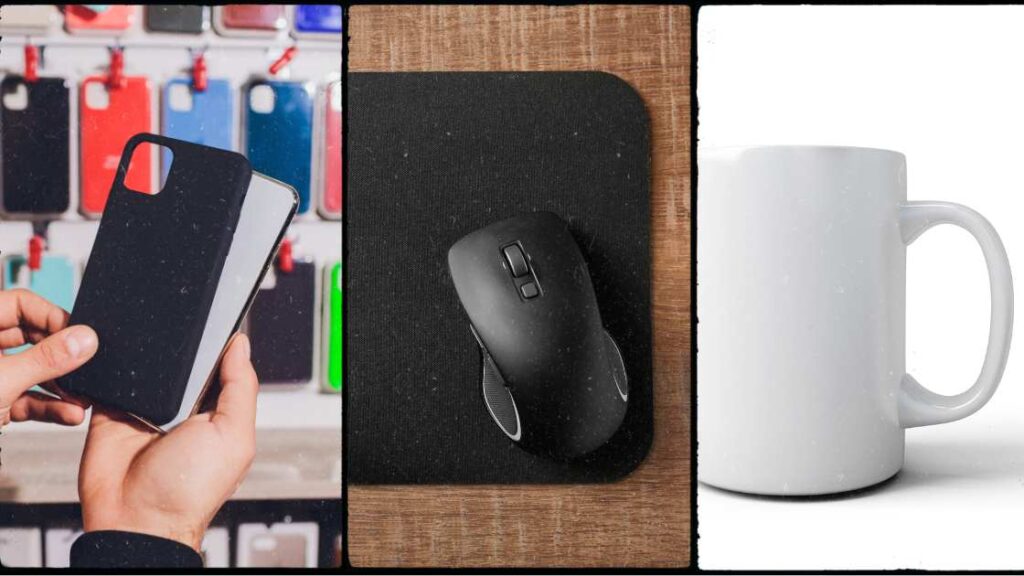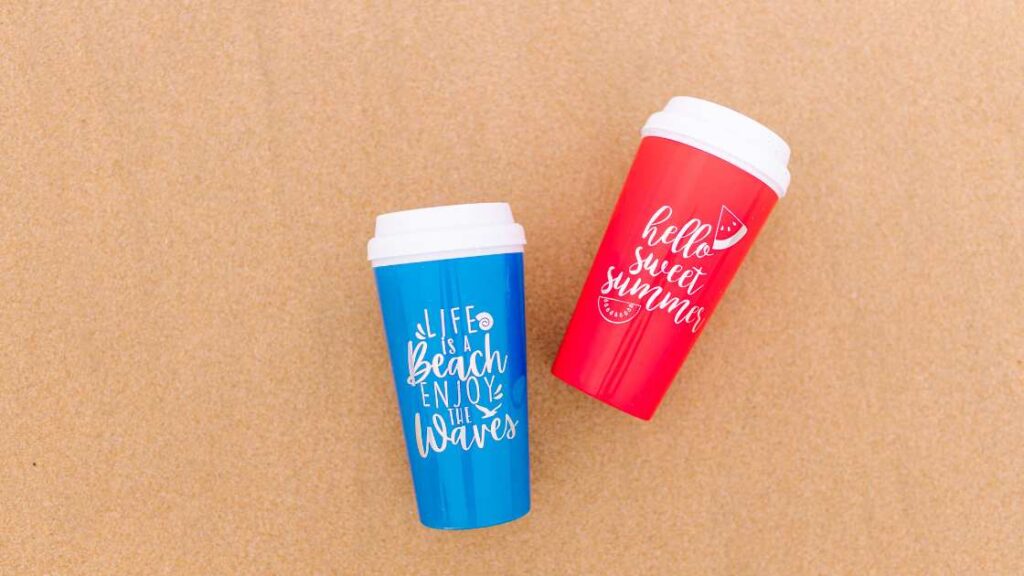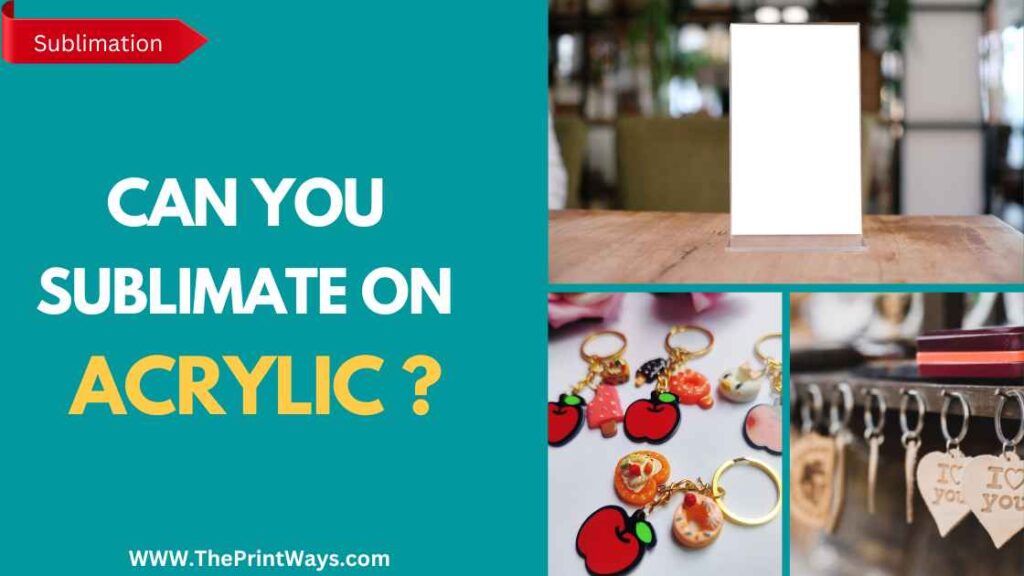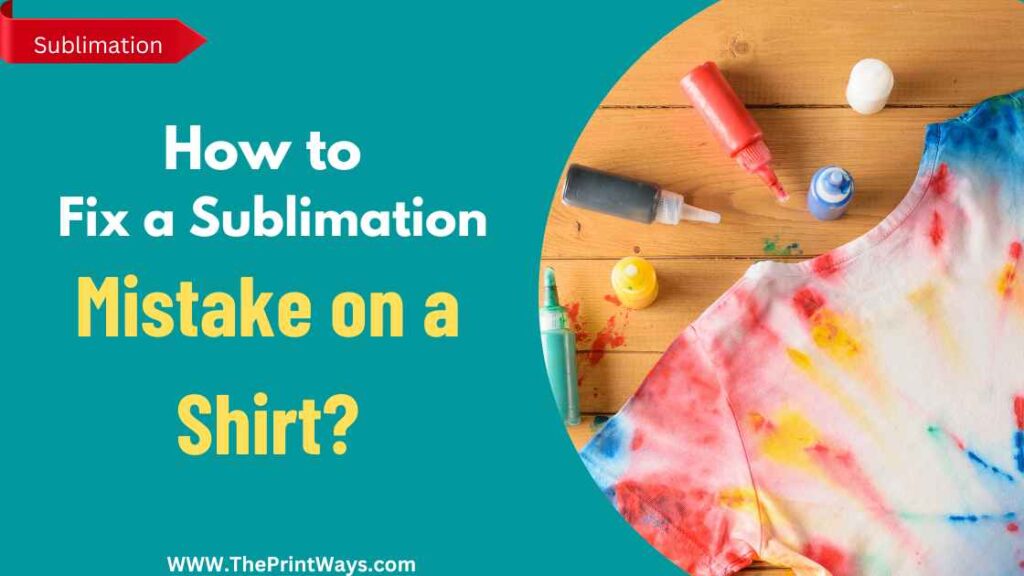Plastic ranks high on the list of materials utilized in various applications. It’s versatile since it can be formed into any form and is inexpensive and long-lasting. But Can you sublimate on Plastic? This query still contains confusion for many people, so let’s get the right answer to this question.
Sublimation is widely used in the printing industry to transfer designs to surfaces by applying heat and pressure. Sublimation is often connected with textiles and metals, although it can also be done on Plastic. We’ll learn about the process of sublimation on Plastic and analyze its advantages and disadvantages and understand how sublimation on plastic can be done correctly.
What type of Plastic is best for sublimation?

Suppose you want your sublimated design to transfer well and stay on the plastic surface. In that case, you must use the ideal Plastic for sublimation.
Sublimation often employs polyester-based plastics such as PET (polyethylene terephthalate), PETG (glycol-modified PET), and HDPE (high-density polyethylene) (high-density polyethylene).
They are used in the sublimation process because of their exceptional dye-holding capacity.
Many plastic-made products can be sublimated, including:
- Phone cases
- Mugs
- Water bottles
- License plates
- Keychains
- Name badges
- Coasters
- Luggage tags
- Mousepads
- Desk name plates
Sublimation is not advised for use with other polymers like polyvinyl chloride (PVC) and polycarbonate because of their composition and reaction to heat.
When heated, these substances may produce poisonous fumes that are hazardous to both the environment and the people performing the sublimation. For this reason, their sublimation use should be avoided.
When selecting a plastic for sublimation, it is important to consider the surface finish. Most importantly, outcomes are enhanced when printing on a matte surface instead of a glossy one.
In addition, the pattern may not transfer evenly or cling correctly to textured or uneven surfaces, which can be a challenge when sublimating.
Related Post : Can you sublimate on Acrylic ?
Can you sublimate on polypropylene?
Packaging, textiles, and automobile parts are just a few places you’ll find polypropylene plastic being used. However, polypropylene is not the best substrate for sublimation.
The primary cause is that polypropylene lacks the absorption and retention properties of polyester-based polymers necessary for sublimation printing. A poor quality transfer or transfer failure is the outcome if the design is not transferred evenly and adheres correctly to the surface.
Before sublimation on plastic like propylene, you’ll need to apply a specific coating on the surface first. This coating can absorb sublimation ink, commonly formed from a polyester-based substance, and transferred to the polypropylene surface.
However, it can be costly and time-consuming, and the transfer quality may suffer. Furthermore, the finished product may not be as long-lasting as one sublimated directly into a polyester-based plastic surface.
Can you sublimate on plastic cups?

Yes, you can sublimate on plastic cups. It is a great way to create customized designs for events, parties, or businesses. Here is a step-by-step process for sublimating on plastic cups:
Materials required:
- Plastic cup
- Sublimation printer
- Sublimation ink
- Sublimation paper
- Heat-resistant tape
- Heat press
- Protective gloves
Steps-by-Step Guide
Step 1:
You should begin by utilizing a graphics program to develop the artwork you wish to print on your plastic cup. Validate that your design’s printable area is within the limits of your sublimation printer. Design your own, or use one of the many available on the internet. You should plan your design because sublimation only works on white or light-colored cups.
Step 2:
Bring Sublimation Ink and Paper to Your Printer. The correct printing of your design will require you to adjust your printer settings by the manufacturer’s recommendations.
Step 3:
Ensure your plastic cup is clean and clear of any debris or oils that could impede the transfer before beginning the sublimation process. Use a damp cloth free of lint or a light detergent on the cup for thorough cleaning.
Step 4:
Place a sheet of heat-resistant tape on the Plastic cup’s top edge where you want the design to be printed. This will aid in keeping the paper in place throughout the transfer.
Step 5:
Create Your Sublimation Printout Start by creating your sublimation printout on your printer. The final print will be the correct way around if the design is printed in a mirror image or reversed. The artwork also needs to be a good fit for the cup’s surface.
Step 6:
Make a copy of your design on sublimation paper and cut it out, leaving a thin border all the way around. If you do this, the ink won’t get on the heat press or the cup.
Step 7:
Place the printed side of the sublimation paper down onto the Plastic cup’s surface before wrapping it around it. Be sure the paper is securely fastened to the cup using heat-resistant tape and that it will not slide about.
Step 8:
Before using your heat-press, make sure it is properly warmed up. At or below 350 degrees Fahrenheit is ideal. Protect your hands from the hot press by donning heat-resistant gloves.
Step 9:
Wrap the plastic cup in a towel and put it in the heat press. According to your plastic type, the temperature should be set, but most of the time, it’s 380-400°F (193-204°C); the timer should be set for two to three minutes. Be careful not to use too much force, as this could distort the shape of the cup.
Step 10:
After the allotted time has passed, remove the cup from the heat press with care using the gloves provided. If you want to remove the paper from the top of the cup, wait until it’s completely cooled.
Step 11:
To expose your unique design, peel away the sublimation paper from the Plastic cup’s outside. To keep the design intact, you should carefully peel it off slowly.
Also Read : How to print on Mylar Bags ?
Frequently Asked Questions
Q: Is it necessary to use a special printer for sublimation on Plastic?
To transfer the design to the plastic surface, you will need a specific sublimation printer, sublimation ink, and sublimation paper. Sublimation ink is specially formulated to become a gas upon heating, penetrating the Plastic’s surface and hardening upon cooling.
Q: What is the best temperature and time for sublimation on Plastic?
The ideal range for sublimating on Plastic is between 380 and 400 degrees Fahrenheit (193 and 204 degrees Celsius), and the time required varies from 30 seconds to 2 minutes. Follow the manufacturer’s guidelines for the type of Plastic and thickness of the material used to determine the appropriate temperature and time.
Q: Is it possible to sublimate on curved or uneven plastic surfaces?
A sublimation heat press made specifically for plastics may sublimate on curved or uneven surfaces. Suppose you want your sublimation transfer to go well. In that case, you need one of these heat presses, which is why they’re built to exert uniform pressure throughout the entire surface.
Q: Are there any safety concerns before starting sublimation on Plastic?
When sublimating on Plastic, ensure there is enough fresh air and wear safety gear such as gloves and a mask in case of any toxic gases. Overheating and other safety issues can be avoided if the heat press is properly calibrated and set to the correct temperature and time.
Q: What are some common applications for sublimation on Plastic?
Phone covers, keychains, water bottles, license plates, and promotional products are common uses for sublimation on Plastic. Using sublimation printing on Plastic, making one-of-a-kind items with professional graphics at a reasonable price is possible.
Q: How do you achieve vibrant colors by sublimation on Plastic?
Achieving vivid colors while sublimation on plastic requires using high-quality ink and paper and the right temperature and time parameters. You need to prime the plastic surface and transfer the ink at just the right temperature and pressure to get the greatest results.
Q: Can you sublimate on Plastic that has already been printed on?
After printing on Plastic, sublimation can be challenging and may not yield quality results. The preexisting print may impede the sublimation process, and the Plastic may not be able to endure the necessary heat and pressure.
Conclusion
Sublimation on Plastic has made it possible to create highly unique and personalized plastic goods. Polyethylene, polypropylene, and acrylic are just a few of the polymers that lend themselves well to the sublimation process. Sublimation on Plastic may create a design that lasts long and is resistant to fading and scratches with the correct tools, temperature, time, and surface preparation.





